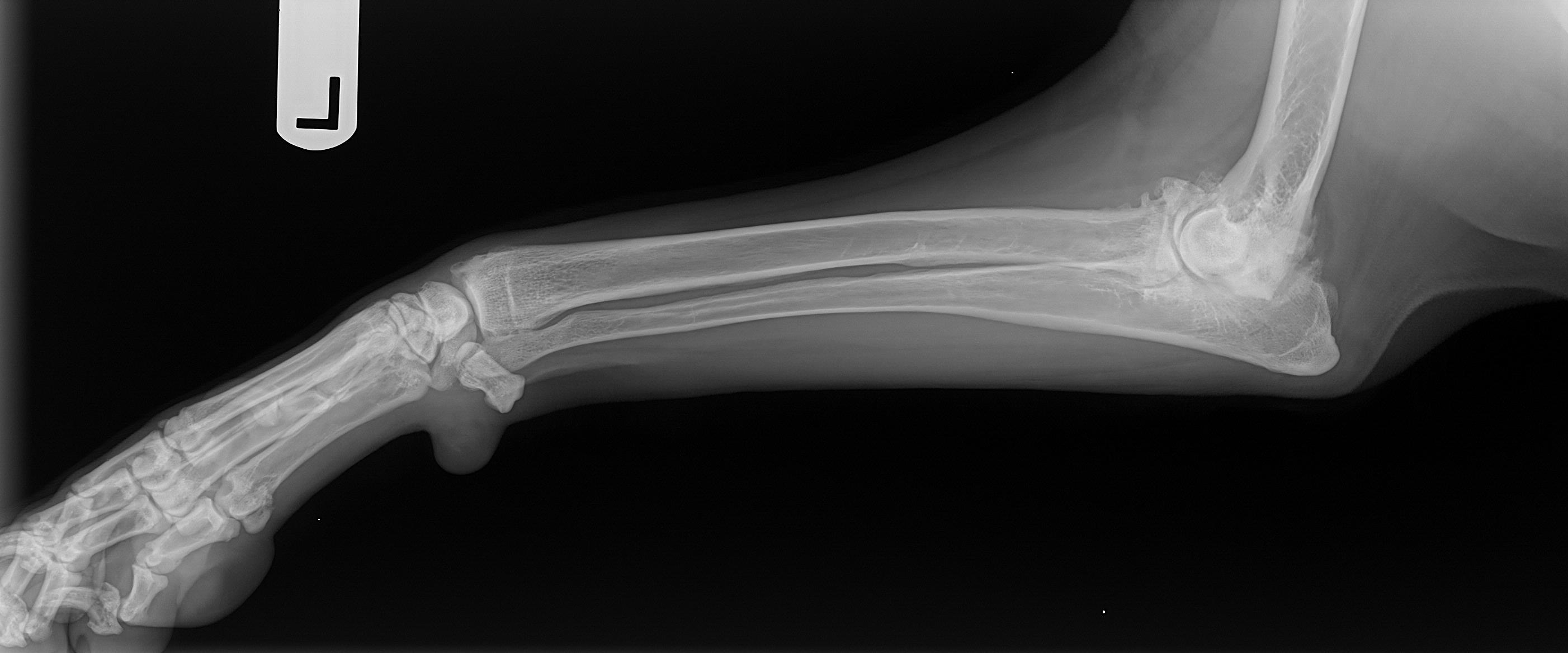Laurie's Blogs.
Sep 2016
LIT REVIEW - Radiation for Elbow Osteoarthritis

Kapatkin AS, Nordquist B, Garcia TC et al. Effect of single dose radiation therapy on weight-bearing lameness in dogs with elbow osteoarthritis. VCOT 2016; 29: 338-3343
Link to full paper:
http://www.orthovetsupersite.org/sites/default/files/vcot-full-paper/vcot_2016-29-4_25889.pdf
Introduction:
It is well known that elbow osteoarthritis (OA) is a difficult disease to treat, with current treatments being mainly palliative. Therapies prescribed are medical management, physical rehabilitation, weight or activity management or surgical techniques. One study on electro-acupuncture found no benefit, and while PRP or stem cells may show some kinetic gait improvements, larger studies are needed.
Low dose radiation therapy has been used to treat degenerative disorders in humans, and has been used in horses as well. Radiotherapy is not well understood, however studies report low dose radiotherapy to have a direct anti-inflammatory effect on articular tissues, which leads to reductions in bone loss, synovial proliferation, signs of pain, and nitric oxide production.
Materials & Methods:
Six, client-owned, senior Labrador Retrievers with unilateral or bilateral elbow osteoarthritis were used in the study. They were taken of pain meds and anti-inflammatory drugs for one week prior to their first force plate analysis. Three gait analyses were made prior to administration of ‘10Gy’ of radiation. One dog dropped out after the first study date.
Dogs were prescribed 3-days of Tramadol and follow-up force plate testing was done again at 2- and 4-weeks post-radiation. Thereafter they were followed monthly for a year or until owners determined that the dog required analgesic medication for pain management.
Results:
There were some significant differences in weight bearing on the affected limb with elbow osteoarthritis after radiation therapy, which were especially apparent at six to 14 weeks. Change due to treatment was particularly apparent in dogs with unilateral elbow osteoarthritis where increases of PVF increased at most time points after treatment.
Only 2 dogs continued the study for the full year, the others dropped out at 3-months, 5-months, and 6-months respectively due to the need for NSAIDs to manage pain.
Discussion:
At early time points following radiation therapy for all dogs when considering both the most affected limb of each dog and all affected limbs, there was increased weight bearing on the treated limb and a slight decrease in VI.
The finding of owner’s perception of improvement corresponded with the slight improvement (increase in weight bearing) evident from PVF data, however this could have been a placebo effect.
This is the first study to look at low-dose radiotherapy as a treatment option. As such, it is unknown as to whether alternate doses of radiotherapy would have been more effective. However it is important to consider that ionizing radiation has potential risks for long-term side effects at high doses or multiple treatments. The use of a low dose of radiation is desirable because it greatly diminishes the risk of induction of neoplasia. (Although one human paper with a 4-year follow up and a literature search, did not report or find incidences of secondary malignancies subsequent to radiotherapy for degenerative joint diseases.)
In conclusion, the use of 10 Gy as a single dose of radiotherapy for elbow osteoarthritis may have a small, short lived beneficial effect in dogs. Other radio - therapy protocols may have different results.
Laurie’s thoughts:
This is fascinating and a promising study. However, I don’t think that I would choose radiotherapy as a therapeutic option for a dog of mine with elbow osteoarthritis unless other avenues had been tried first. I also think that the mechanism of action for radiotherapy is much like any of our modalities: ‘stimulate the body so that it can work to heal itself.’


